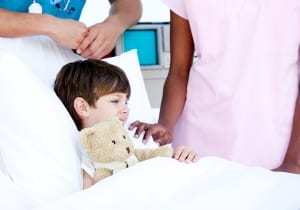Herzliya Medical Center
Tel: +972-9-959-4888
09:00-18:00

You are several days before your kid’s surgery. During this time, you are probably trying to gather any important information about the procedure, and in general about what you’ll go through on surgery day at the hospital. Here you’ll find additional important information for that day: the “stations” you’ll go through at the medical center until you enter the operation room and after your kid leaves it
Once you get to the hospital, you’ll be received by Herzliya Medical Center’s service representative who will escort you personally and closely from this moment until your discharge and will be your personal address for every need. You’ll have a quick check-in, just like at a hotel, during which you’ll register and fill out general details. At the end of the check-in, your kid will receive the new friend who will accompany him throughout his stay at the hospital (and become his best friend after discharge as well): ‘Teddy-Medi’, a cute and smiley teddy bear, male or female, as the kid chooses. The kid could bring ‘Teddy Medi” to the operation room as well because good friends stay with you in those moments.
At this stage, the service staff would explain the process expected, who you’ll meet, what you’ll wear and what each “station” includes.
You’ll have to bring to the hospital the kid’s blood test (if the surgeon requested), a summary of the family physician about the kid’s condition, drugs he’s taking regularly (with the original box), a letter from an expert doctor about a chronic disease, if any – heart problem, asthma, lung disease and so on. It’s important you bring your ID as well, including the slip with the kid’s details, and a commitment form.
The hospital nurse will receive the documents you filled out and would perform some general tests for the kid: blood pressure, weight, temperature and so on. From there you’ll continue, escorted by the service representative to the operation rooms area.
The anesthesiologist is the one to perform the anesthesia and in fact be the last staff person the kid sees before going under, so it’s very important to introduce them – this will make it easier for the kid later, as he’ll see another familiar face (next to your face, as one parent can enter with the kid into the operation room until the anesthesia).
This is also your chance to ask questions, learn more about the anesthesia and share fears, if you need that to relax. It’s recommended to prepare questions for that meeting in advance, at home, since during it you might be excited and unfocused. During this meeting, you will also sign an anesthesia consent form (if you’re divorced, both of you will need to sign this form).
Knowing more about the surgery
The best thing is to learn about the surgery from the surgeon himself. Here too there is great importance in a preliminary meeting in terms of the kid’s feeling, to make it feel more “at home” later, in the operation room, when he sees another familiar face. For you this is a chance to ask questions about the surgery – and here too it is recommended to prepare questions in advance. In this meeting, you will also sign a surgery consent form (if you’re divorced, both of you will need to sign this form as well).
Before going into the operation room, the kid will be dressed in a special pajama with animal drawings. The drawn pajamas can be a basis for a conversation about the animals and provide another distraction from what’s going on around him. To the operation room, the kid will go with one of the parents (and with Teddy-Medi), accompanied by the operation room nurse The parent to go into the room will be asked to wear a disposable sterile robe, overshoes, and headcover. He will stay in the operating room until the anesthesia induction phase is over, and after the kid has completely vague of conscious.
Immediately upon the end of the surgery, you’ll be called – both parents – to the recovery room, to make sure you’re the first people the kid sees when he wakes up. After about an hour, you’ll be moved to a high standard hospitalization room, as per Herzliya Medical Center’s standard. Throughout the hospitalization, it’s important to watch over the kid and even after he received permission to get out of bed – don’t leave him alone, as he’s unstable and might trip more than once.
The first meal after the surgery (according to medical instructions), your kid will receive on a special tray in the shape of a truck, whose driver is no other than his new good friend “Teddy-Medi”.
Before the discharge phase, there are instructions from the surgeon and the nurse. The doctor will determine if the kid can be discharged and when. The nurse will provide you with extensive detail about many issues that would surely keep preoccupy you at this stage: nutrition, mobility, pain treatment, signs of infection or inflammation, treatment of the surgical incision, the kid’s safety, scheduling a follow-up, returning to routine and more. This is another chance for you to ask questions – what you didn’t get to ask during the meeting with the doctor.
The on-call doctor will give the final discharge approval. At the reception counter, you’ll receive the important medical documents and the staff would make sure the account is closed.
At the Herzliya Medical Center hospital, we maintain follow-up and support of our patients even after they’re discharged, via the “healing after surgery” service. This is a service within which the hospital nurse would call you to make sure the kid is well. The follow-up can even aid in the early detection of problems that require going back to the hospital or contacting the surgeon.